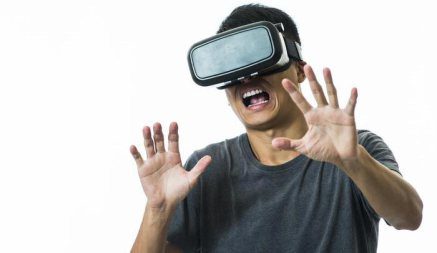Most people experience some mild social phobia at one time or another, but for a select few, the discomfort related to socializing can be crippling. This is known as social anxiety disorder and it can ruin a person’s life. It is far worse than just being shy or disliking to socialize – it can prevent a person from leaving his or her home, and destroy personal relationships.
A little more than 10 percent of the population is thought to suffer from social anxiety disorder to varying degrees. More men than women have it, and it’s more likely to occur in younger adults. People who suffer from social anxiety find themselves alone and lonely, unable to manage their problem on their own, but unable to seek help because doing so requires so much social interaction.

Treatment for Social Anxiety Disorder
Treatment is available for social anxiety disorder. One of the most common types of treatment is cognitive behavioral therapy (CBT), which can be utilized individually or in a group setting. Many people benefit from receiving treatment in a group setting because it exposes them to their problem in a social environment, but one that is safe and where they are understood. Unfortunately, this means that some in the group might not get the individual attention needed to combat their problem and they might be so intimidated by the situation that they are unable to work through their anxiety.
Individual treatment often works better, but it is more labor intensive and more expensive. Some people suffering with social anxiety disorder just don’t have the resources needed or access to individual CBT therapy.

Virtual CBT Therapy Shows Promise
Luckily, there is some speculation that patients with social anxiety disorder might be able to engage in the type of therapy they need in a virtual environment. During the 1990s, virtual reality was used with some success to treat a variety of other phobias and anxiety disorder. For instance, those with a fear of flying experienced their fear in a VR environment that was safe and allowed them to work through their fears with control.

Now, VR can be used to also expose people to social situations without losing control of the situation. Using VR to treat anxiety was recently explained in the British Journal of Psychiatry. According to one study’s lead author, Dr. Stephane Bouchard of the University of Quebec in Canada, there were immediate and long-term benefits to the treatment. VR treatment was also reported as more practical by therapists.
Therapists involved in the study were in the room with the patients during the VR application, which was done in an effort to ensure a therapeutic relationship during the treatment process. Essentially, the treatment method utilizes VR tools. Patients are able to be exposed to social situations in a controlled environment with the support of their therapist. In this manner, “group” therapy might be possible, as well as simulations of real-world interactions between the patient and other people. Through the virtual world, a patient is able to experience and work through the anxiety triggered by social situations.
There is still some distance to go, as using VR to treat anxiety takes time like any anxiety treatment. It’s a long-term treatment that requires multiple exposure to scenarios that provoke anxiety and help people overcome the fears that manifest. There’s also concern that not all therapists will have access to the resources needed to apply VR social anxiety therapy. More research is needed to determine if the practice of VR therapy will be a reasonable method for treating social anxiety, but hopes are high. It could be the key to helping those with crippling social anxiety experience a fuller and happier life.





